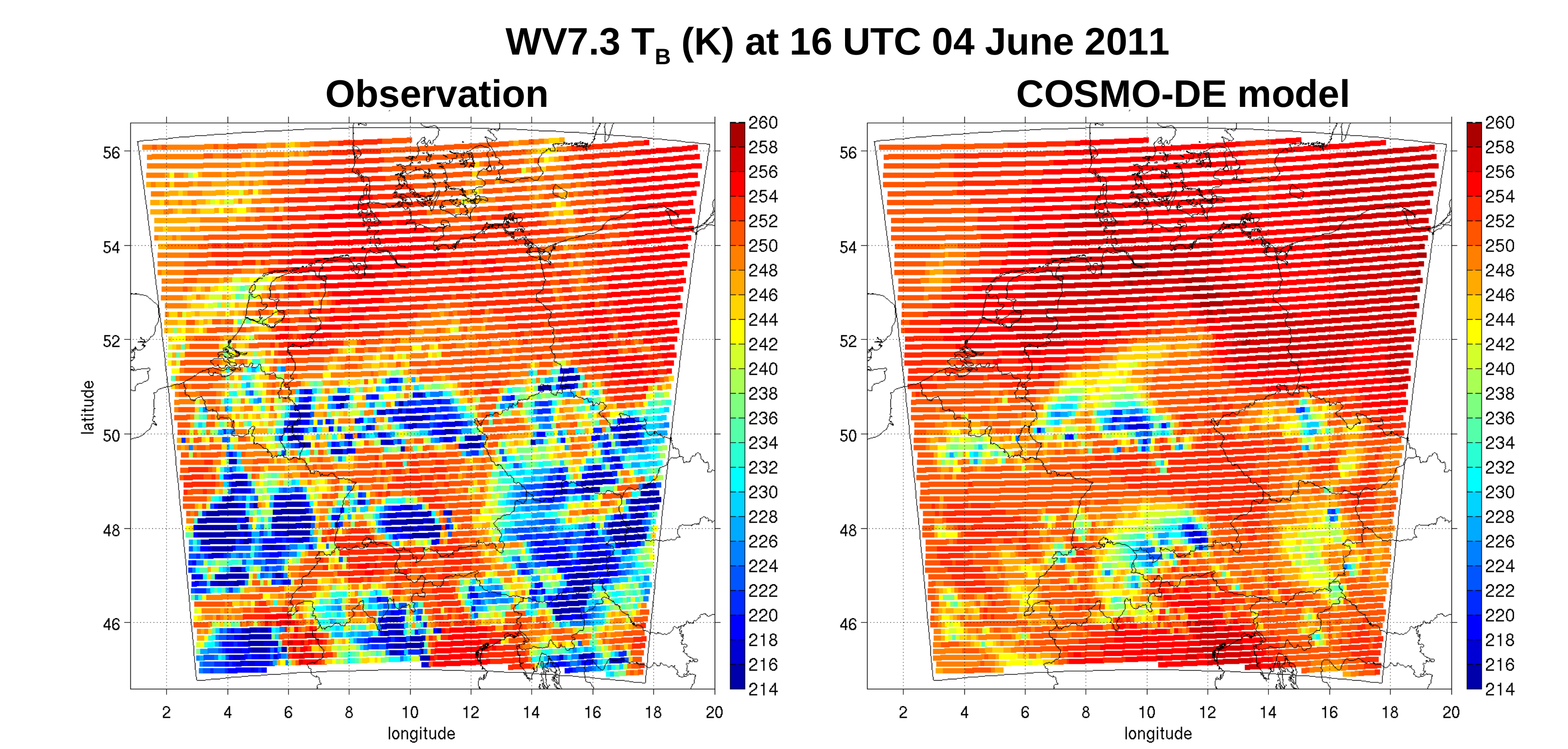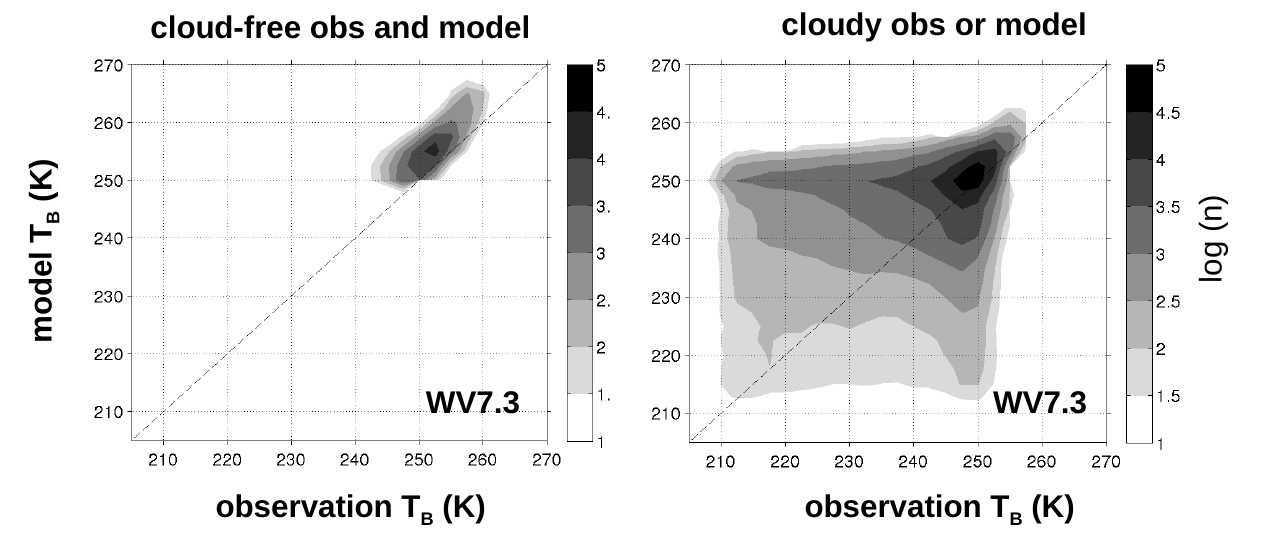Errors of cloud-affected infrared observations of water vapour sensitive channels
A systematic comparison of observations and COSMO-DE model background forecasts is performed to investigate the observation error statistics and systematic errors of the SEVIRI observations at the wavelengths of 6.2 μm and 7.3 μm. The brightness temperature observations at these channels are sensitive to the atmospheric water vapour in the middle and upper troposphere, but also to clouds at these levels.

Figure 4: Snapshot of observed and simulated brightness temperatures (K) for one single time.
Figure 4 shows the comparison of observed and simulated brightness temperature (BT) observations for a single case. The example highlights that there are considerable differences between the BT model forecast and the observations, and also that the differences are varying between the cloud-free (in the north) and cloudy (mainly in the south) regions.

Figure 5: Two-dimensional histogram of observed and simulated brightness temperatures for 1 h forecasts within the period from 02-06 July 2011.
Comparing both BT observations and model forecasts for a period of 6 days (Fig. 5), a good agreement and small uncertainty is found when only cloud-free data are considered. When the sample data includes also cloudy cases, the agreement becomes much worse. Differences between the observations and the model of up to +/- 40 K are possible (Fig. 5). One reason for the large discrepancy is related to the occurrence of clouds. Clouds, especially at upper-levels have a large influence on the BT signal, and when a clouds is present only in the observations or the model but not in both, the missing cloud impact is responsible for the large differences.
The uncertainty between the observations and the model is strongly increased in the presence of clouds, and a potential observation error model would need to account for this larger uncertainty. The observation errors in cloudy cases are larger due to the location error of the cloud, but also due to larger errors of the RTTOV forward model used to simulate cloudy BT from the COSMO-DE model forecasts.
We are currently investigating the use of different predictors, analog to studies by Geer and Bauer (2011) and Okamoto et al (2014), to quantify the cloud impact on the BT observation and model forecasts. The idea is that the magnitude of the cloud impact determines the uncertainty, and larger observation errors should be used when the cloud impact is strong.
References:
Geer AJ, Bauer P. 2011. Observation errors in all-sky data assimilation. Quart. J. Roy. Meteorol. Soc. 137, 2024–2037.
Okamoto K, McNally AP, Bell W. 2014. Progress towards the assimilation of all-sky infrared radiances: an evaluation of cloud effects. Quart. J. Roy. Meteorol. Soc. 140, 1603–1614.

